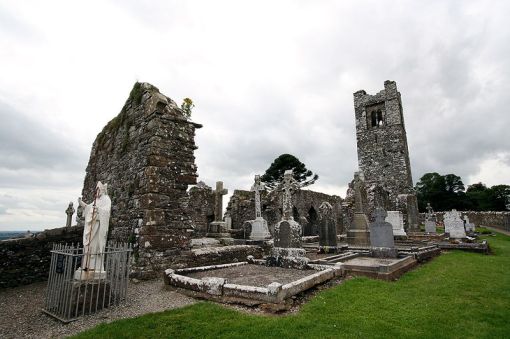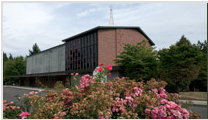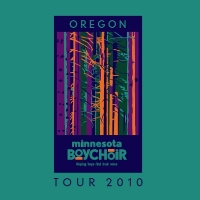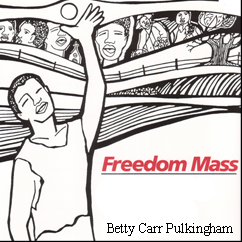The following is a wonderful article written by Linnea Good, a self described “singer, songwriter, worship guide, and musical animator” based in Summerland, BC Canada. It’s not short, but it is very inspirational as we musically develop and grow.
Music has many jobs to do in worship. Singing proclaims the word, tells the scripture, reflects on and analyzes it. Music marks beginnings, middles, and ends of things. Sometimes it covers quiet moments like candlelighting; other times noisy moments like the children’s leaving. It touches the heart in ways that the spoken word cannot. As Augustine said, those who sing pray twice.
But, sometimes we see music as merely a “punctuator” to an order of spoken worship pieces (calls, prayers, scriptures, announcements, and the like). Scripture is followed, a theme is discerned, hymns chosen (and a prayer said that the anthem will fit somewhere). The job of music, then, is to re-state the theme of the day. Our biggest musical concern becomes trying to order our three chosen hymns so that the most familiar hymns are placed in the most singable order in the liturgy.
The result might be a service that feels comfortable enough – in which the leaders and the people will have had a “meeting of the minds.” At the door, people might even say, “Good sermon” or “Nice music.” However, a service that is shaped in this way remains largely in our left brain – a kind of scholarly, holy busy-work.
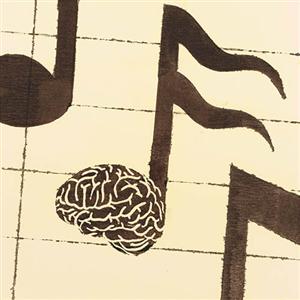 The left brain is our thinking, analyzing, fact-and-data organizing mind. This side of our individual and collective thinking is extremely important; it helps us make sense of the information we receive, to sift and sort it, discard what is unusable, build on our beliefs, and so forth. But, it does not worship very well. Like Habakkuk, perched upon the rampart, it is watching to see what God will say, yet longing to hear a voice truly from the heart.
The left brain is our thinking, analyzing, fact-and-data organizing mind. This side of our individual and collective thinking is extremely important; it helps us make sense of the information we receive, to sift and sort it, discard what is unusable, build on our beliefs, and so forth. But, it does not worship very well. Like Habakkuk, perched upon the rampart, it is watching to see what God will say, yet longing to hear a voice truly from the heart.
The right brain allows for thinking outside the lines. It is creative, expansive, intuitive, and emotional. It creates connections between previously unconnected things. It works with images, symbols, and ritual. It is the other half of the worship equation.
Without the left brain, the life of faith would lapse into passionate free-associating without critical thinking or transformation. Without the right brain, the life of faith would amount to a set of beliefs and weekly head-nodding to them. Worshiping with only one side of our brain makes us unbalanced, unintegrated people. As such, we will be inclined to try and control the spiritual experiences we encounter in worship and without – to force them to fit the one-sided mold we have created. At worst, this can actually turn into an addiction – a controlling pattern.
But worship is at best, I believe, a series of currents that move us through life’s contradictions: peace against challenge, old patterns comfortably repeated against new patterns allowed to emerge, outward awareness against inner contemplation, passionately upbeat against passionately serene… Worshiping with both intuitive and analytical thinking allows us to be nurtured and transformed. And that is where “service music” comes in.
Service Music as a Connector and Integrator
When I refer to “service music” I mean music that tends to consist of short, such as repeated songs and refrains that appear throughout the worship service. Each has a different purpose. They are often lines from scripture, celebrating our relationship with God. They ask and answer questions, voice yearnings, mourn, affirm, aspire, mark the time, and remind us of what we long to know. They go home with us and become a part of our everyday, spiritual landscape. Service music is intended to bind together the frayed ends of the selves we bring to church. It speaks to our left brain in words that match the worship’s theme or the purpose of the moment; it speaks to our right brain through melody, the variegated threads of harmony, rhythm, and intensity.
Thus, music is a connector and integrator in worship. It allows us the space to take in what has been offered and it gives it a new and potentially deeper emotional impact. Service music turns around the idea that the liturgy is essentially a spoken thing with some music in between and makes it essentially sung with moments of speech – even if there is more speaking than song!
In worship that employs service music, the onus for the momentum or the moving forward of the worship belongs to the music. Spoken parts are reduced in size; for example the Call to Worship becomes shorter and acts more like an introduction to (dare I say?) the real beginning of the service – the singing. Spoken, unison prayers are let go, in favor of singing the same.
Service music creates the connections between spoken and prayed pieces of the worship so that our sense of movement together is unbroken. In churches where the complaint is that the service is too long, often it is not the clocked length of the service that is the problem but rather the lack of liturgical momentum that creates the sense of time dragging.
Another way of looking at it is that, rather than being an element that fills the next empty space in the liturgy, service music often seeks to create an empty space – a receptivity or opportunity for the Spirit to speak. A good example of this is the singing that follows the sermon. Oftentimes, the “hymn” after the sermon is one in which the preacher’s theme is confirmed or the singer invited to make a response to what she or he has heard. If we wished instead to allow space for the listener to integrate the message more fully, we might choose to sing a piece of service music that was simple and bare.
Service Music: Some Possibilities
Consider the variety of sung responses you could integrate into worship, including whole hymns, single verses, or refrains:
- Introit: Focus the people as a group on worshiping; can function as a Call to Worship. In the Music Showcase for this issue of Update, consider using “Enter, Rejoice, and Come In” or “Come and Find a Quiet Center.”
- Approach: Focus the people as a group on worshiping and on the theme of the day. Refer to Music and the Lections for weekly suggestions.
- Scripture entry: Sung before scripture is shared, it celebrates the word of God. “What Does the Lord Require of You?” can set a tone for active engagement.
- Psalm response: This allows the psalm to be spoken or sung aloud by any combination of choir, congregation, and leader. The psalm is read like a poetic conversation with God, rather than like a prayer. The response may be sung at the beginning and end, or every four verses, as the words permit. For lament psalms, try the refrain of “There Is a Longing.” For psalms of praise, consider responding at the beginning, middle, and end with verses from “Great Is Thy Faithfulness.”
- Sung scripture: A line from one of the gospels, epistles, or Hebrew scriptures may sum up the theme of the day. It could be sung between all the scriptures, as an introit, before prayer, as a closing, and so on. Refer to Music and the Lections for weekly suggestions.
- After-sermon reflection: allows for a brief moment of thoughtfulness or rest before leaving the engagement with the word. A For a more upbeat feel, try “What Is Our Service to Be?”
- Prayer entry: Invites the people into a prayerful state. Aiming for fewer words in the prayer itself will allow a sense of nurturing our relationship with God, even as we ask God for grace and power in the situations for which we are praying. You might use the refrain from “Be With Me, Lord,” or try repeating “Father in Heaven” for a number of weeks as a sung version of the Lord’s Prayer.
- Ending (Benediction and/or Commissioning): Singing is the perfect end, giving a sense of closure. For an exuberant sending song, use “Go, Make Disciples.” For a quieter benediction, consider “As You Go on Your Way.”
Service Music: Some Guidelines
Unless you are trying out one deliberately “different” style of worship with lots of warning for your people, it would seem best to incorporate some of these pieces slowly, and one by one. You might choose a period or season in which you invite congregants to experiment with you and your music leaders by singing parts of the service. Each added piece might have a small explanation given – either verbally or in your bulletin – so that people can feel part of the change.
Plan for it. Make a musical overview for the next number of worships. Let there be a mix of music that:
- stays the same for a liturgical season – for example, a prayer response or Advent candle-lighting song.
- comes and goes throughout the season or period – for example, have two children’s theme songs that alternate during Lent.
- is new every week – such as a psalm response.
Don’t let anything stay for longer than a couple of seasons.
Consider momentum. Whatever the order of service that you follow, aim for a feeling of momentum that, in broad strokes, begins with bigger energy, deepens into more contemplative feel, and ends again with bigger energy. Do this with music, story, word, and prayer.
Don’t just add to the service. Be willing to let go of some spoken pieces to make room for the sung ones. I am not joking when I say that this is a point of considerable difficulty for many clergy, whose upbringing has taught them that their job is to speak!
Alternate speaking and singing. Plan not to let speaking follow speaking. Let there be a hymn, sung response, or small instrumental moment to connect each spoken piece.
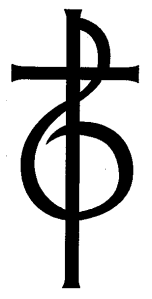 Let voice lead voice. Have at least one human facing the singing congregation and leading with an encouraging manner. Be careful, however, not to conduct like a choir director. Hands and whole bodies lead big energy singing; eye contact and eyebrows or palms raised in a devotional manner for tender and prayerful times.
Let voice lead voice. Have at least one human facing the singing congregation and leading with an encouraging manner. Be careful, however, not to conduct like a choir director. Hands and whole bodies lead big energy singing; eye contact and eyebrows or palms raised in a devotional manner for tender and prayerful times.
Teach with care. Teaching is a sensitive thing. It can be done during the service, especially if the music falls at the beginning or end of worship. For example, the music leader might say, “Join us in this response to the psalm,” then sing the response two or three times, letting the psalm begin without further explanation. Music for the middle of the worship, such as at prayer time, might best be taught before the service begins. However, if you find yourself needing to teach a response in a moment that is quiet and reverent, you might consider simply singing it yourself, and raising your head expectantly the second time around to invite the congregation to join you.
Include musical subtleties. Allow the music sometimes to begin lightly underneath the introduction to a spoken piece or to carry on after the singing is done, and the next speaking begins. This often smoothes the transition from one element to another if it is done quietly. (Be aware of people’s difficulties with hearing in these cases)
Use worship refrains. Worship refrains may be repeated any number of times. While it is not necessary to sing each response multiple times, it is still helpful to sing most of them more than once. This is a hurdle for many in the mainstream pew. Let the intensity build and drop again. Consider singing a refrain with no accompaniment at some point, if that feels comfortable. Bring in instrumentation at different times, not all at once. Don’t simply repeat the refrain with the same feel.
Transitioning with Care
As with anything that affects people profoundly and spiritually, it is almost inevitable that some will have a strong reaction to change in worship. Respond with thanks and check back with them after a few weeks. If a number of people are still having a strong reaction to the change, re-evaluate the change, its placement, the speed of the transition, or the way it is being led. If the reaction has softened, carry on.
The transition to worship of word and prayer woven with music is a scary one for many. It touches parts of us previously shielded. It can feel like abandonment to some, a switch to another denomination for others, overly emotional to still others. But when people have truly prayed and prayed twice, it can be the beginning of a profoundly different way of worshiping. My prayer is that, having sung thus far, there will be no turning back.
 Lent, if you ask me, is all about good ol’ J.S. Bach, the baroque pioneer. I always try to throw one selection in every week (did anyone notice that we had two this past Sunday, thanks to Zach and Valery both lending a musical hand?) to keep the service appropriately moody, tumultuous, tense. Composers in this period were hesitant to combine emotions within one movement of a piece, unlike their classical period friends – that’s you, Mozart – who humorously toyed with tonality. Perfect for Easter, not Lent.
Lent, if you ask me, is all about good ol’ J.S. Bach, the baroque pioneer. I always try to throw one selection in every week (did anyone notice that we had two this past Sunday, thanks to Zach and Valery both lending a musical hand?) to keep the service appropriately moody, tumultuous, tense. Composers in this period were hesitant to combine emotions within one movement of a piece, unlike their classical period friends – that’s you, Mozart – who humorously toyed with tonality. Perfect for Easter, not Lent.
 I wish there was a video of a choir or parish performing When From Bondage.. but it is noticeably absent from YouTube. You’re lucky we’re not singing it this Sunday or else I would record you all! Nevertheless, I always dust off my recordings of Handel’s Messiah during Lent. “You mean that Christmas song?” Yes yes.. It is most frequently performed at Christmas, but that’s only one-third of the story. Literally. Handel’s magnificent work is written in three dramatically titled sections – The Annunciation (should be called: The One Everyone Performs), The Passion (aka: Overlooked Due Programming Competition), and The Aftermath (Warning: For Messiah Dorks Only!) Locking it away until Advent is surely a sin! Of course, if you bring your whole block to the Easter Vigil, they will all be saved when they hear I Know That My Redeemer Liveth from the final section.
I wish there was a video of a choir or parish performing When From Bondage.. but it is noticeably absent from YouTube. You’re lucky we’re not singing it this Sunday or else I would record you all! Nevertheless, I always dust off my recordings of Handel’s Messiah during Lent. “You mean that Christmas song?” Yes yes.. It is most frequently performed at Christmas, but that’s only one-third of the story. Literally. Handel’s magnificent work is written in three dramatically titled sections – The Annunciation (should be called: The One Everyone Performs), The Passion (aka: Overlooked Due Programming Competition), and The Aftermath (Warning: For Messiah Dorks Only!) Locking it away until Advent is surely a sin! Of course, if you bring your whole block to the Easter Vigil, they will all be saved when they hear I Know That My Redeemer Liveth from the final section.